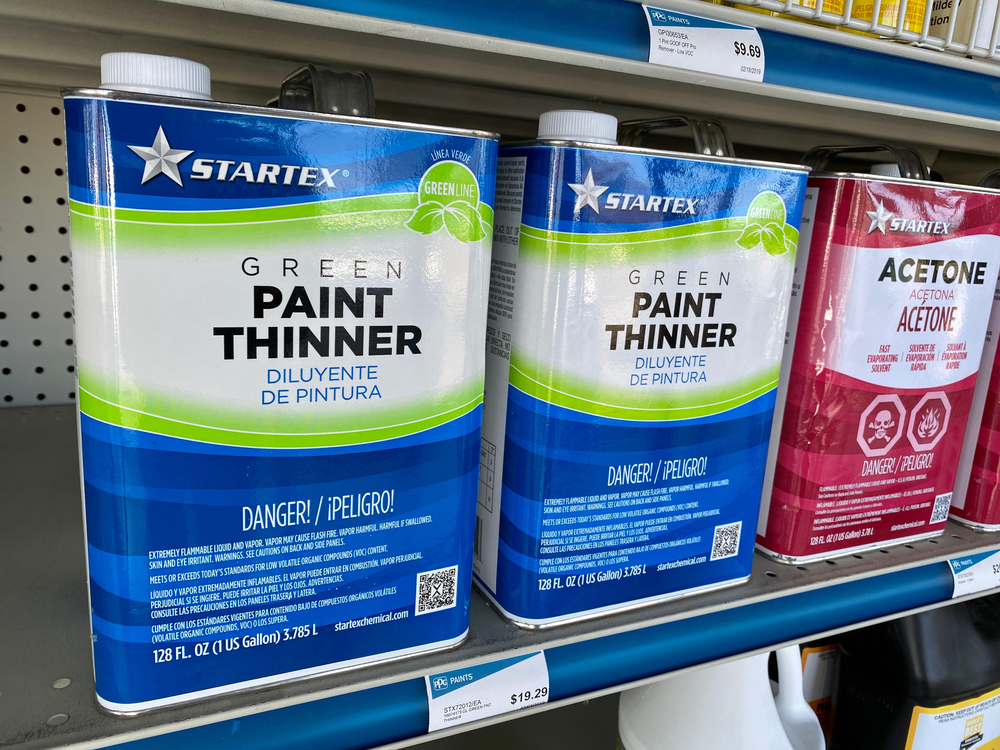So, you’ve had a DIY mishap and inadvertently sprayed paint onto a plastic surface?
Don’t worry; it happens to the best of us, and it’s not the end of the world. Although unwanted paint on plastic is a nuisance, you can rectify the issue with the right tools and know-how. It’s going to require a bucket load of patience and a vigorous dose of elbow grease, but you’ll soon be looking at a like-new plastic surface again.
But beware: polymers are highly susceptible to most modern solvents; you need to be methodical in how you clean the mess. In this handy how-to guide, we’ll show you five tried and tested ways to remove spray paint from plastic without melting the surface.
Removing Spray Paint From Plastic: Tools of the Trade
You probably already have most of the essential equipment lying around your home. The rest you can pick up from your local hardware store or line. A few products to consider include a:
If you’re working with harsh chemical solvents, you’ll need to purchase and put on the proper protective gear. Denatured alcohol and paint strippers require the following garments of personal protective equipment (PPE):
The ideal spray paint-busting solution depends on numerous factors: the type of paint, how long it’s been there, the plastic, etc. Start with the most gentle solution first and work your way up. Here are some additional items you might need before you get started:
- Warm water
- Dishwashing detergent
- Vegetable oil
- Nail polish remover
- Rubbing alcohol
- Denatured alcohol
- Oil-based paint remover
How to Avoid Accidentally Painting Plastic

While it’s possible to remove spray paint from plastic, it’s an arduous task. Plus, you could mistakenly damage the surface should you spring for a heavy-duty solvent.
The best solution is prevention, so take all the necessary steps to minimize the likelihood of wayward paint. Use painter’s tape to cover any nearby surfaces and fasten drop sheets to protect furniture, walls, and the floor.
Extra time spent in the preparation stage could save you the headache of a clean-up once you’re done.
How to Remove Spray Paint From Plastic: Five Simple Solutions
Let’s look at five effective ways to remove paint from plastic.
And remember: the heavy-duty solutions could corrode or discolor your plastic surface, leaving it looking worse than it did with stray spray paint. Try the gentle options first and gradually transition towards the tough stuff.
1. Warm Water and Dishwashing Detergent
If you accidentally sprayed paint onto plastic only moments ago, you’re in luck. Get in quick, and you can simply wash and wipe it away. Here are a few simple steps you can follow:
- Fill a bucket with warm water and a few squirts of a liquid dishwashing detergent.
- Swish or stir the bucket until it foams.
- Dunk a sponge in the bucket.
- Wipe the affected area vigorously in a circular motion.
- Dry it off with a paper towel or a clean cloth
Remember, the faster you act, the easier it will be. Spray paint takes about five minutes to dry enough for a re-coat and half an hour to dry to the touch—we told you to get in quick!
2. Vegetable Oil
If soap and water didn’t help, your spray paint has already dried. The next step is to reach into the kitchen pantry and whip out some vegetable oil. While it works wonders in a stir-fry, this every household staple is even better at dissolving paint.
Vegetable oil only reacts with oil-based paint. If you’ve accidentally sprayed latex paint onto plastic, try denatured alcohol instead. Using vegetable oil is also simple, so if you follow these steps you shouldn’t have any issues:
- Clean the surface with warm water and detergent.
- Wipe the surface dry.
- Dab some vegetable oil onto a clean cloth.
- Rub the affected area vigorously to soften the paint.
- Use a putty knife to pry the paint away.
When wielding a putty knife, don’t push too forcefully to avoid scratching the surface. The aim is to slide the scraper underneath the splotches and gently lift them off. Constant, steady pressure and a whole load of patience are the pillars of success.
If you’re working on an uneven surface—say, a curvy contoured chair—you’ll have better luck with a razor blade. Adopt the same lifting style as the putty knife and work slowly to prevent accidental scratches. Always scrape away from you to avoid slicing your skin.
3. Nail Polish Remover
Nail polish remover is a super-effective household solvent. And you probably already have some tucked away in the bathroom cupboard. Here are a few methods to make the most of nail polish remover
- Clean the affected area with warm water and detergent.
- Wipe the surface dry.
- Dab a small amount of nail polish remover onto a clean cloth or paper towel.
- Rub the nail polish remover into the affected area.
- Wait 10 minutes.
- Rub the solvent into the affected area again.
In most situations, the paint will start to fade away—it might take a few more attempts. Remember to wipe off the solvent when you’re done.
4. Rubbing or Denatured Alcohol
The next option is to dig deep into your cleaning cupboard and whip out the rubbing alcohol. Also known as isopropyl alcohol, this everyday wonder solvent is brilliant at disinfecting surfaces and removing stubborn liquid stains like ink or paint.
Rubbing alcohol is only effective at dissolving latex paint. Try vegetable oil instead if you’re working on oil-based paint.
Although it won’t damage your plastic, it’s best to avoid contact with your skin and face. Below are a few ways to use rubbing or denatuered alcohol:
- Clean the affected area with a damp sponge.
- Wipe the surface dry with a clean cloth or a paper towel.
- Pour the alcohol over the affected area.
- Scrub vigorously with a cloth or sponge.
- Continue rubbing until the paint fades.
It takes a fair bit of effort to clean dry paint with rubbing alcohol, so get ready to pump up the elbow grease.
If you’re not getting anywhere, try following the same process using denatured alcohol, a more powerful solvent.
Careful, though, because this stuff could dissolve your plastic as well as the paint—patch test a section first to see how it reacts. Denatured alcohol also poses a severe health risk, so put on your PPE.
5. Paint Remover

You’ve tried soapy water, vegetable oil, nail polish remover, and rubbing alcohol, but to no avail.
It’s time to bring out the big guns. Get ready to blast away the stain with a dab of super potent paint remover.
If you’ve used paint thinners and strippers before, you know it can be nasty stuff. The treacherous paint strippers of old contained methylene chloride, a lethal active agent linked to dozens of accidental deaths.
While it’s now outlawed for home use, you still need to treat the legal options with respect. Cover yourself with PPE to avoid contact with the skin, especially the face.
This paint remover from Dumond Chemicals does a fantastic job at neutralizing oil-based paints and isn’t as toxic as other solvents on the market. When using paint remover, you want to follow these rules closely:
- Put on a face mask, work gloves, and safety goggles.
- Clean the affected area with a damp sponge.
- Wipe the surface dry with a paper towel.
- Brush on a tiny dab in an inconspicuous area to see how it reacts with the plastic.
- Leave the paint remover for 24 hours.
- If it hasn’t damaged the plastic, apply a thin coat to the affected area with a paintbrush.
- Leave it to sit for 24 hours.
- Use a putty knife to pry the loosened paint away.
- Use a scrubbing brush to scratch off any leftover flakes.
The Clean Up
Regardless of which method you choose, you’ll need to clean up the crime scene once you’re done.
Scrub the area down to remove the lingering specks of paint, and then give it a good wash with soapy water. Grab a clean cloth or paper towel and dry the area to remove every last trace of your home improvement blunder.
The Final Word
While stray spray paint is a pain, an inadvertent squirt doesn’t mean you’ve ruined your plastic surface for good. In this guide, we’ve given you five effective solutions for cleaning up the mess—remember to try the simplest solution first and work your way up.
